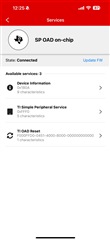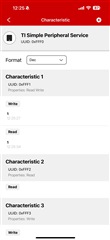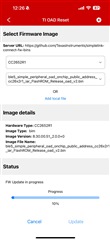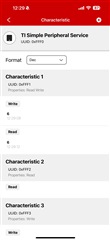Other Parts Discussed in Thread: UNIFLASH
Tool/software:
Hello,
I am using CC2642R controller for my BLE application. I have used simple peripheral on-chip example for my application. This involves using the OAD characteristics and I am successfully able to perform OTA using another CC2642R running the hex file of BTool. I have certain questions regarding the same:
1. When i connect a basic BLE Scanner App to the controller and write any random data to the characteristic, the controller stops working and enters the default infinite error loop. I need to avoid this as our application can be directly connected i.e. anyone can read and write to the characteristics. (So even if anyone can write to the OAD characteristic, only the proper command can start firmware update and the systems does not go into the infinite while loop)
2. Also, is there source code available for implementing the bin file to image conversion and subsequent communication with CC2642R.
Thanks and Regards.






